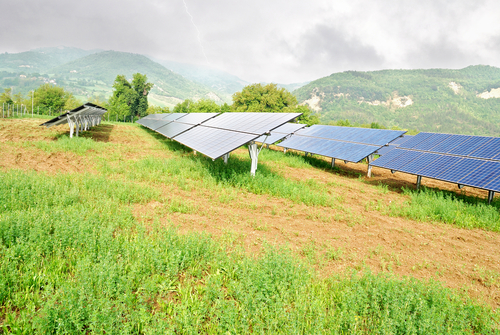 Pairing the words “economy” and “energy” in the same sentence seems straightforward enough. Yet these two words–combined with the word “sustainable”–open up a world of controversy as well as immense opportunity. The controversy comes from differing opinions of how best to tap the Earth’s resources to meet humanity’s power needs. The opportunity is the number of career pathways available in various scientific fields. Those holding a degree in chemistry, biology, geology or earth sciences may find themselves delving into cutting edge technology in the search for sustainable, economical energy sources.
Pairing the words “economy” and “energy” in the same sentence seems straightforward enough. Yet these two words–combined with the word “sustainable”–open up a world of controversy as well as immense opportunity. The controversy comes from differing opinions of how best to tap the Earth’s resources to meet humanity’s power needs. The opportunity is the number of career pathways available in various scientific fields. Those holding a degree in chemistry, biology, geology or earth sciences may find themselves delving into cutting edge technology in the search for sustainable, economical energy sources.
Understanding EROEI – Energy Returned on Energy Invested
Energy Returned on Energy Invested, or EROEI, is a measure of how much energy must be expended to produce another source of useful energy. Looking at conventional oil production, it takes one unit of energy to extract 20 units of useful energy. Extracting bitumen from tar sand mines, such as those in Alberta, Canada, requires one unit of energy to produce less than six units of useful energy. Traditional oil production is more economical in the amount of energy expended and in the cost of that production. Since oil is traded on a global market, the price is also determined by that market’s fluctuation.
EROEI and Alternative Fuel Sources
When it comes to alternative fuel sources, hydro power is one of the most efficient both in its EROEI and cost to the consumer. Depending on the water source, for every one unit of energy expended, between 11 and 267 units of useful energy are created, with an average cost to the consumer of $0.01 per kilowatt hour. Wind power has an EROEI of 18 units of useful energy for each unit expended, ultimately costing the consumer between $0.045 and $0.10 per kilowatt hour.
Solar photovoltaic energy’s EROEI is more variable, putting out between 3.75 and 10 units of useful energy per each unit of consumed energy, at a consumer cost of between $0.21 and $0.83 cents per kilowatt hour. Solar power’s consumer cost is higher than the other forms of alternative energy listed. The difference is that power companies in more and more cities allow consumers to “sell” their unused electricity to the power companies. The power is put into the grid system and a credit amount shows up on the power bill. This allows consumers living in areas with longer, colder winters to benefit from their solar power system year-round.
EROEI and the Future of the Energy Industry
Since oil producers must use more units of energy to produce useful energy, this affects the price of that production, the amount being produced and company profits. Scientists and engineers will be needed to find ways to extract oil that are less expensive yet still comply with environmental standards. Some oil companies also recognize the need to explore renewable energy options. Chevron (which has a questionable, at best, record for corporate social responsibility) for one, is working with Weyerhaeuser Company on creating biofuels using cellulose technology. The company is also investing in geothermal and solar energy technology.
The fact is that fossil fuels are a finite source of energy. Once every drop of oil is extracted from beneath the Earth’s surface, that’s it. Scientists in a variety of fields are needed to perfect the alternative energy sources already discovered and create even more economically viable, sustainable alternatives.
Follow the Inspired Economist on Twitter



